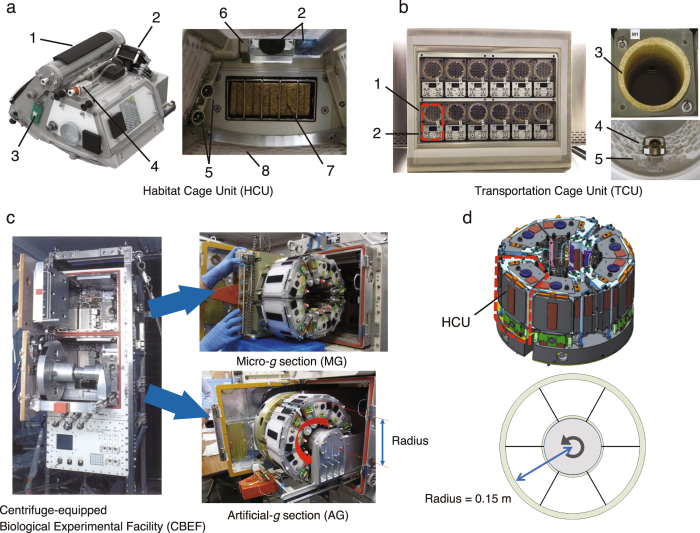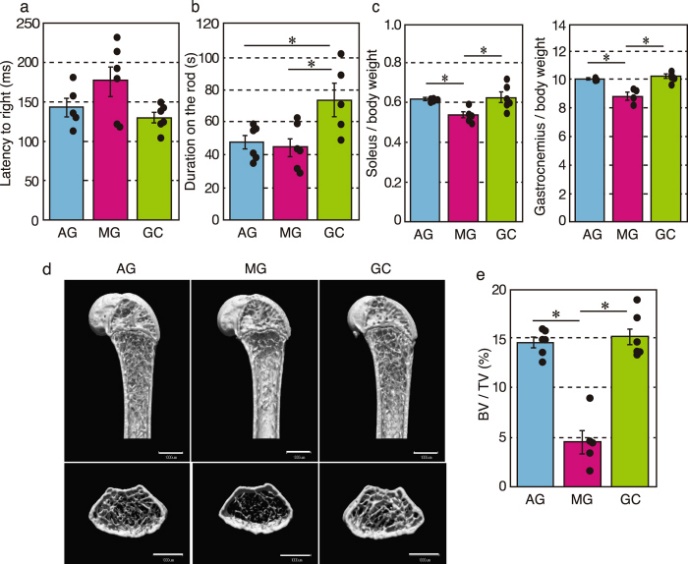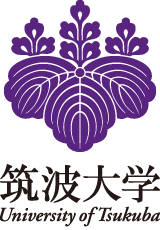Japan is participating in the International Space Station (ISS) Program conducted by the world’s largest international cooperation of 15 countries, including the United States of America, Russia, Canada, and several European countries. The ISS is a human-tended laboratory flying approximately 400 km above the Earth’s surface.
Japan launched and attached the Japanese Experiment Module (named “Kibo”) to the ISS in 2008. It is used as a laboratory to conduct experiments involving the unique space environment which is exposed to long-term microgravity and the various types of space radiation which cannot be recreated on Earth.
JAXA has promoted life science research using the “Kibo” space laboratory to contribute to studies relevant to human health, aging and disease on Earth. After lengthy periods living in space, even healthy astronauts experience detremental symptoms as a result of their living and working environment. These symptoms include weakened bones and muscles, and a degraded sense of balance. This is similar to those associated with aging on Earth except that they progress over 10 times faster in space.
In this context, since 2013 we have developed a new rodent (mouse) research capability on Kibo. In particular, we have developed a mouse habitation system that can rear mice under an artificial gravity environment using an on-orbit centrifuge, as a unique research facility aboard the ISS. This enables us to evaluate gravitational effects on mammals in space precisely by allowing a comparison between microgravity (µG) and artificial gravity (AG) conditions. We can rear mice over extended terms under partial gravity (lower gravity than 1 g) conditions, including simulated lunar (1⁄6 g) and Martian gravity (3⁄8 g) conditions which will contribute to studies for future human exploration in space.

Fig 1[1]. Newly developed mouse cages for the space experiment. (a) Habitat Cage Unit (HCU). The HCU accommodates one mouse per cage. 1: Water tank, 2: Camera/LED, 3: Temperature sensor, 4: Washer water inlet, 5: Water nozzles, 6: Wiper for camera, 7: Food cartridge, 8: Polycarbonate floor/walls. A 7-day supply of food and water is provided inside the HCU. (b) Transportation Cage Unit (TCU). The TCU contains 12 cylindrical cages in one unit. Each cylindrical cage accommodates one mouse. The TCU supports up to a 10-day supply of food and water during the launch and landing phases. 1: Housing area with food, 2: Water tank, 3: Food, 4: Water nozzle, 5: Polycarbonate floor/walls. © Centrifuge-equipped Biological Experiment Facility (CBEF). The CBEF has two compartments: the micro-g section and the artificial-g section with a centrifuge. (d) AG section. The centrifuge accommodates six HCUs and has a rotation radius of 0.15 m where it contacts the floor
In August 2016, we accomplished the first mission titled “Transcriptome analysis and germ cell development analysis of mice in the space” (Principal Investigator: Satoru Takahashi, Univ. of Tsukuba) which included the world’s first long term (35 days) rearing of mice in both microgravity and artificial gravity conditions. Twelve live mice were successfully returned to Earth after habitation on the ISS.
JAXA plans to further promote and investigate research in the area of osteoporosis and muscle atrophy, leading to research of ageing and the gravity sensing mechanism related to these symptoms, as well as the genetic and epigenetic changes caused by aging and environmental factors.
Given that JAXA’s mouse habitation system is the world’s only existing research platform able to provide partial gravity environments for mammals in space, we also promote its use as a research testbed for international human space flight exploration activities to the Moon, Mars and beyond.

Fig 2[1]. Effects of microgravity on vestibular function, skeletal muscle and bone. (a) Mid-air righting reflex test. AG (n = 5), MG (n = 6) and GC (n = 6). (b) Rotarod performance test. AG (n = 6), MG (n = 6) and GC (n = 5). *P < 0.05. © Body-weight-normalized skeletal muscle masses from AG (n = 5), MG (n = 4) and GC (n = 6) mice. *P < 0.05. (d) Representative vertical (upper) and horizontal (lower) sectional microCT photos of the proximal region of the femur. Scale bars = 1 mm. (e) The calculated cancellous bone volume/tissue volume (BV/TV, %) of the femurs of AG (n = 6), MG (n = 5) and GC (n = 6) mice. *P < 0.05.
Development of new experimental platform ‘MARS’—Multiple Artificial-gravity Research System—to elucidate the impacts of micro/partial gravity on mice, Scientific Reports, 7:10837, doi: 10.1038/ s41598-017-10998-4, 2017.

- Research Laboratory Leaders
- Professor Masaki Shirakawa
- Japan Aerospace Exploration Agency(JAXA)
01研究概要
JAXAはこれまで「宇宙へ行く・宇宙で活動する」ことに注力し、そのインフラ構築に取り組んできました。国際宇宙ステーション(International Space Station: ISS)の「きぼう」実験棟も打上げから10年を迎え、安定的な実験環境が維持されており、宇宙環境を利用した研究をより身近に・より発展的に活用し「宇宙での成果をより国民へ還元する」ことが期待されています。
日本は、米国、ロシア、カナダ、欧州各国の計15ヶ国の世界最大規模の国際協力により実現された国際宇宙ステーション(International Space Station: ISS)計画に参加しています。ISSは、地上から約400 km上空の軌道を回っている有人の施設で、日本は、「きぼう」実験棟を2008年に打ち上げ、長期間の微小重力や複合放射線など、宇宙でしか得られない環境を利用して様々な実験を行っています。特に、生体への影響として、ヒト(宇宙飛行士)は重さの負荷がかからない微小重力環境での長期滞在により、骨量減少、筋萎縮、バランス感覚低下などが生じます。このような現象は、地上での加齢や寝たきりによる体の変化と類似しており、しかも宇宙では変化が地上の10倍以上急速に進行することから、JAXAは、健康や疾患に関する幅広い地上研究との連携を強めることを目的として、宇宙環境を利用した生命科学研究を推進しています。
この一環として、我々は、2013年より新たに哺乳類の小動物(特にマウス)を用いた研究環境を整備しています。特に、他国にないユニークな研究環境として、より厳密な重力の影響評価や1G以下の低重力環境の模擬が行えるよう、遠心機を用いた人工重力環境でマウスを飼育できる環境を新たに開発しました。

Fig 1[1]. Newly developed mouse cages for the space experiment. (a) Habitat Cage Unit (HCU). The HCU accommodates one mouse per cage. 1: Water tank, 2: Camera/LED, 3: Temperature sensor, 4: Washer water inlet, 5: Water nozzles, 6: Wiper for camera, 7: Food cartridge, 8: Polycarbonate floor/walls. A 7-day supply of food and water is provided inside the HCU. (b) Transportation Cage Unit (TCU). The TCU contains 12 cylindrical cages in one unit. Each cylindrical cage accommodates one mouse. The TCU supports up to a 10-day supply of food and water during the launch and landing phases. 1: Housing area with food, 2: Water tank, 3: Food, 4: Water nozzle, 5: Polycarbonate floor/walls. © Centrifuge-equipped Biological Experiment Facility (CBEF). The CBEF has two compartments: the micro-g section and the artificial-g section with a centrifuge. (d) AG section. The centrifuge accommodates six HCUs and has a rotation radius of 0.15 m where it contacts the floor
2016年8月には、世界初となる宇宙での長期(35日間)の微小重力と人工重力環境での同時飼育やISSからの全匹の生存帰還を含め、最初のマウス飼育ミッションを成功裏に完了しました。今後も、この研究環境を最大限活用し、加齢研究等につながる骨代謝制御、筋維持・萎縮、これらのトリガーとなり得る重力感知機構、老化や環境適応に伴う遺伝子的・エピジェネティックな変化に関する研究など重点的・継続的な推進を図る方針としています。また、重力が地球のおよそ1/6の月や、およそ1/3の火星を想定した研究に活用できるので、今後、月・火星に向けた探査など宇宙に進出する人類(宇宙人)のためのテストベットとして「きぼう」を活用し、国際宇宙探査へ貢献を図りたいと考えています。

Fig 2[1]. Effects of microgravity on vestibular function, skeletal muscle and bone. (a) Mid-air righting reflex test. AG (n = 5), MG (n = 6) and GC (n = 6). (b) Rotarod performance test. AG (n = 6), MG (n = 6) and GC (n = 5). *P < 0.05. © Body-weight-normalized skeletal muscle masses from AG (n = 5), MG (n = 4) and GC (n = 6) mice. *P < 0.05. (d) Representative vertical (upper) and horizontal (lower) sectional microCT photos of the proximal region of the femur. Scale bars = 1 mm. (e) The calculated cancellous bone volume/tissue volume (BV/TV, %) of the femurs of AG (n = 6), MG (n = 5) and GC (n = 6) mice. *P < 0.05.
Development of new experimental platform ‘MARS’—Multiple Artificial-gravity Research System—to elucidate the impacts of micro/partial gravity on mice, Scientific Reports, 7:10837, doi: 10.1038/ s41598-017-10998-4, 2017.

- 主任研究員
- 白川 正輝 教授
- 宇宙航空研究開発機構(JAXA)


